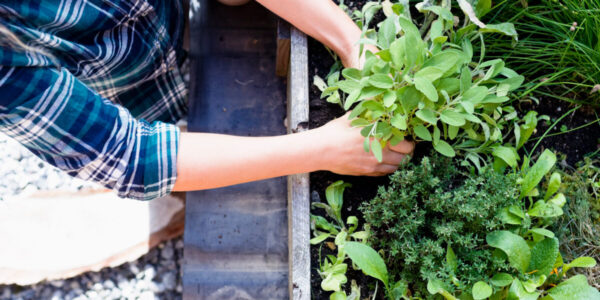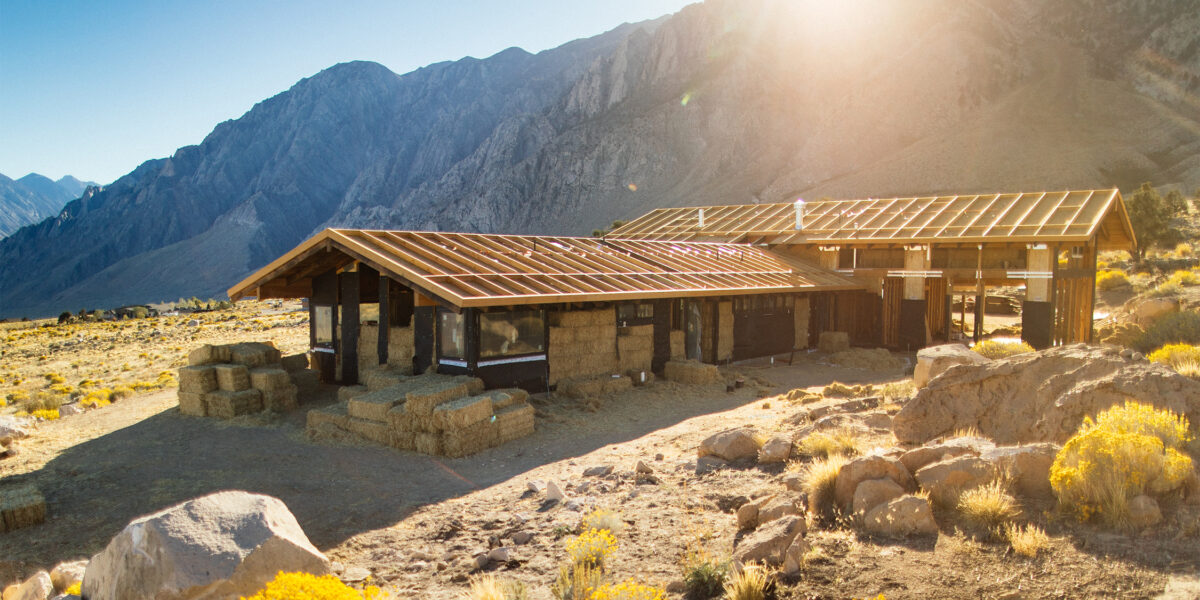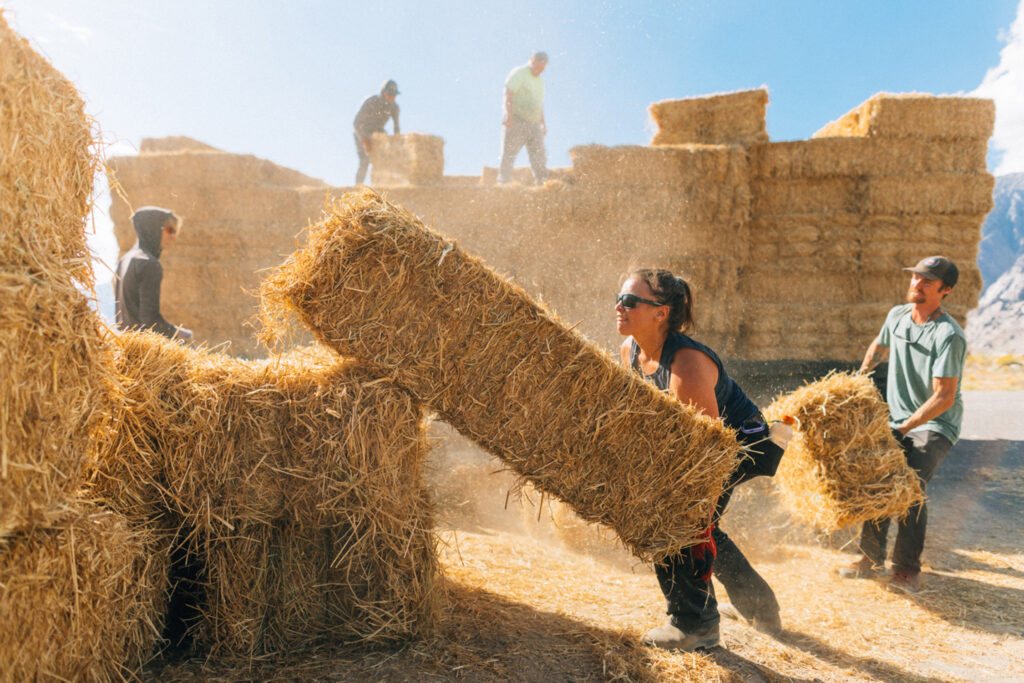
Is the Home of the Future a Straw-Bale House?
It certainly leaves a smaller carbon footprint.

© Forest Woodward
The home building process and all that entails isn’t exactly known for being the most environmentally-friendly. But there is a growing trend of using materials and construction methods to build with sustainability at the forefront. One material we might be seeing more of in the future? Straw bales. And a recent short documentary film by Patagonia looks at the process.
The film follows architect and climber Dylan Johnson, Patagonia founder Yvon Chouinard, sustainable builders, and a farmer who supplies hay bales as they work to construct two straw-bale homes in California—one in the rugged terrain of Swall Meadows and the other in the suburbs of Ventura.

© Forest Woodward
And actually, straw-bale construction is rising in California because there’s a lot of rice grown in the state. And straw is a byproduct of the crop. Chouinard sees a lot of opportunity there and has been interested in straw bale as a building material for 50 years. “The future of business, I think, is waste. There’s a tremendous amount of money to be made with waste and that’s what this is,” Chouinard says in the film.
In straw-bale construction, the bales are utilized as the insulation and/or a structural element in the home. But don’t worry, if you’re wondering how that looks aesthetically, the walls are usually finished with earthen or mineral plasters.
Johnson says that building a straw-bale house is not a big stretch from how you normally do things. And the environmental benefits of the material are impressive when you think of how buildings are traditionally made. “Buildings around the world account for about a one-third of greenhouse gas emissions in the global economy. So it’s a huge part of climate change,” Johnson adds.

© Forest Woodward
As for the material itself, it has a lot of benefits aside from the environmental aspect. “[It’s] actually a good building material because it’s hard to burn when it’s really compacted. It doesn’t actually decompose easily unless it gets really wet and stays that way. It’s non-toxic and highly insulating,” a natural materials specialist Massey says in the film. Hay bales can also be another stream of revenue for farmers—one farmer featured in the film, Ron, grows rice and is in the baling world and sends at least 10,000 to 15,000 for building every year.
And judging from the looks of the Ventura home in the film, the house really doesn’t look all that different from the traditional homes surrounding it; it just leaves a smaller carbon footprint. “I think we’re going to get nowhere in trying to save this planet with an attitude that we’re not part of nature. So the more natural you can make a house, I think the better off you are,” Chouinard says in the film.
Watch the film below.
